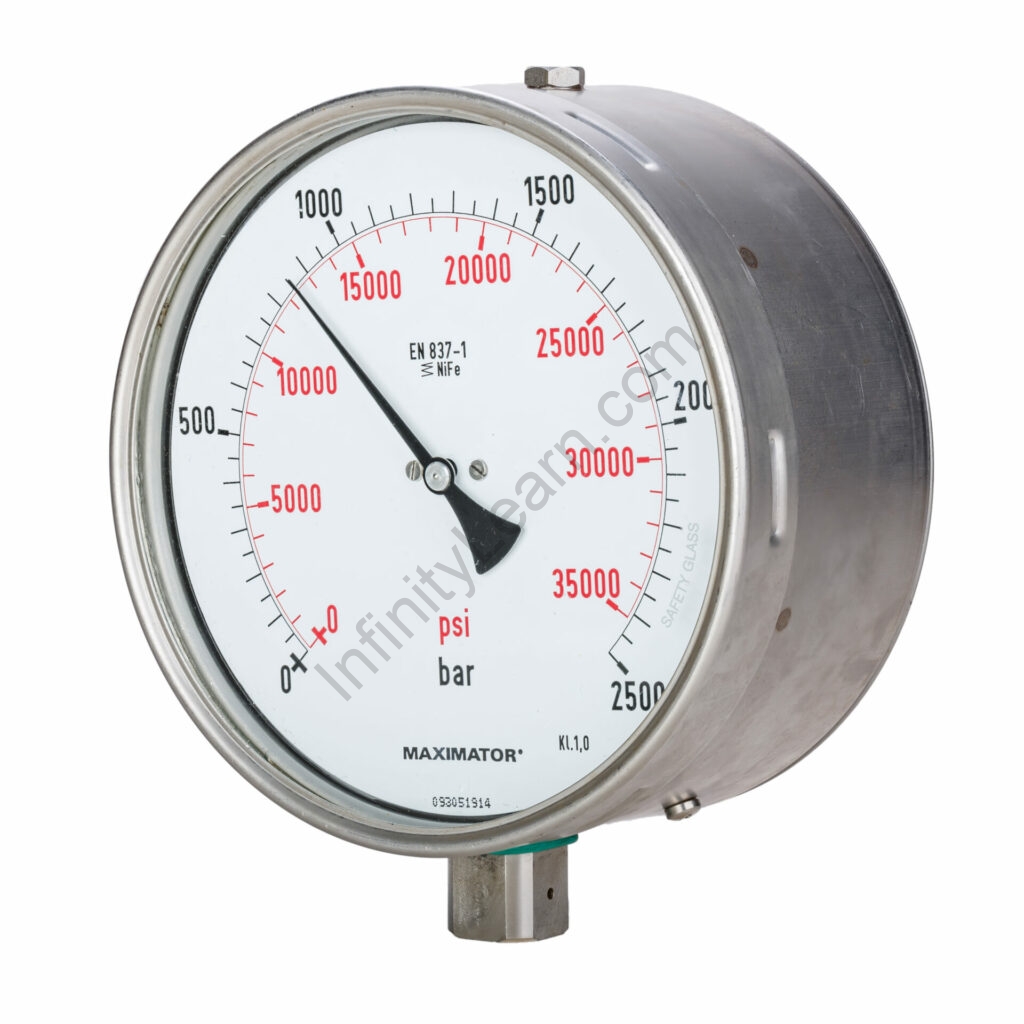Table of Contents
Introduction:
The concept of pressure is the ratio of the applied force to the region across which the force is applied. Pressure is defined as a force applied perpendicular to an object’s surface per unit area about which that force is dispersed. When a force of ‘F’ Newton is exerted perpendicularly to a surface area of ‘A,’ the force exerts the same pressure on the surface as the ratio of F to A. The pressure (P) formula is as follows:
The pascal (Pa) is the SI unit of pressure. A pascal is considered as an act of one newton exerted over a one-meter square surface area.
A brief outline:
Factors Influencing Blood Pressure:
Because the pressure is proportional to the area over which the force acts, the pressure can be changed without changing the force. When the force applied remains constant, the pressure increases as the surface becomes smaller, and vice versa.
A brick resting on a surface, for example, exerts a force on the thing it is resting on equal to its weight. We now know that a rectangular brick has a big front surface and a thin back surface. We can efficiently change the pressure applied on a surface by changing the position of the brick laying on the surface.
In other words, when the surface area shrinks, the pressure increases. Our blades and nails are razor-sharp because of this. The force is distributed evenly throughout the whole cutting edge of a knife. Cutting with a sharp knife is easier when the edge is sharper and the pressure is higher. The force is dispersed over a larger surface area on a blunt knife’s blunt surface. As a result, we’ll need to use more force to cut. As a result, a knife is sharpest when it is at its sharpest. A well-delivered karate chop is significantly more devastating and fatal than an open-handed slap for the same reason reduction of surface area increases net pressure.
However, a larger surface area is sometimes preferable. A standard drawing pin has one flat round end that is used to press the sharp point into the drawing table. Consider how difficult it would be to insert a drawing pin into a board if both sides were sharp. You can easily apply the appropriate force because one end is flat. Skiing and surfing employ similar strategies. We extend the area about which our weight affects by utilizing surfboards and skis, allowing us to float or glide across the surface of water or ice.
Important concepts:
How can you figure out how much pressure is in a fluid?
Pressure can be exerted by a solid surface, but it can also be exerted by fluids (liquids or gases). This may appear unusual at first because it’s difficult to visualize hammering a nail in with the liquid. The vision is submerged in water to a certain depth to make sense of this. Because of the force of gravity, the water above you would be pushing down on you and exerting pressure on you. Because there will be more water above you as you travel deeper, the weight and pressure of the water will also increase.
The weight of gases, as well as the weight of liquids, can exert pressure. The weight of the air in our atmosphere, for example, is significant, and we’re usually always at the bottom of it. The weight of the atmosphere exerts a remarkable amount of pressure on your body. The air pressure is always present, which is why you don’t sense it. Only a difference in pressure up or down normal atmospheric pressure is noticeable to us. Because our bodies are able to produce a force outward to counteract the air pressure within, we are not affected by high atmospheric pressure.
People rarely want to know the overall pressure while measuring pressure (which includes atmospheric pressure). People frequently wish to know how much pressure differs from atmospheric pressure. The reason for this is that atmospheric pressure is relatively constant and is almost always present. As a result, adding it to your calculations may seem unnecessary at times. To put it another way, knowing that the air inside your flat tire is at an absolute pressure of 1.01 x 105 Pa isn’t that beneficial.
The additional pressure in the tyre above atmospheric pressure is what allows the tyre to properly inflate and perform. As a result, the gauge pressure P gauge is used in the majority of gauges and monitoring equipment. The pressure measured as a percentage of atmospheric pressure is known as gauge pressure. Pressures above atmospheric pressure are positive, pressures at atmospheric pressure are zero, and pressures below atmospheric pressure are negative. The absolute pressure P is typically used to refer to the overall pressure. Absolute pressure refers to the pressure in relation to a vacuum. So, for all pressures above a complete vacuum, absolute pressure is positive, zero for a perfect vacuum, and never negative.
Water pressure is one of the most common types of pressure in everyday life, but it behaves differently in a hydrostatic environment (one in which the water isn’t flowing) than it does in your water heating system.
Significance of concepts of pressure in NEET exam:
Because of the precision and validity of the solutions, Infinity Learn is the first choice for many CBSE students when it comes to NEET exams. We make certain that the solutions are correct and that they will assist all students. With the help of infinity Learn’s solutions, students may quickly complete their Class 12 Physics syllabus that includes the pressure chapter and its important concepts.
We’ve all heard the adage, “Practice makes perfect.” This is also applicable to Class 12 students. Only by putting what they’ve learned into practice can students achieve excellent results on their board exams. This not only allows them to discover their strong and weak areas but also helps to lessen their exam anxiety.
Frequently asked questions:
Question 1. How do you distinguish between thrust and pressure?
Answer: The entire force acting perpendicularly on a given surface is known as thrust, whereas the thrust acting on a unit area is known as pressure. Also, while thrust refers to the total force applied, pressure refers to the force applied per unit area. The method P=Force/Area is used to compute pressure, while thrust is calculated using the formula Thrust = Pressure/Area. If we consider the difference between thrust and pressure, we can see that it is the same as any other force with pressure since the force is primarily applied to the body, whereas the pressure is applied to any specific region.
Question 2. What is the relationship between force and pressure in the body?
Answer: The terms force and pressure are not interchangeable. Pressure is defined as the force delivered to the per unit area of a body. If the surface area decreases, the pressure will automatically increase, and if the surface area increases, the pressure will automatically decrease. However, when it comes to force and pressure, things are a little different. When the pressure rises, the force rises with it, and when the pressure falls, the force falls with it.
Question 3. How would you explain the concepts of force and pressure to a young child?
Answer: Simply put, a force is either a push or a pull. When the wind pushes a piece of paper or a sailboard, it is due to the pressure exerted by the force acting on the sailboat. When an apple falls to the ground, it is owing to the force of gravity put on the apple, which allows it to fall. Forces can cause things to move and work to be completed. When we talk about pressure, we’re simply referring to the force that is exerted to a specific location.







